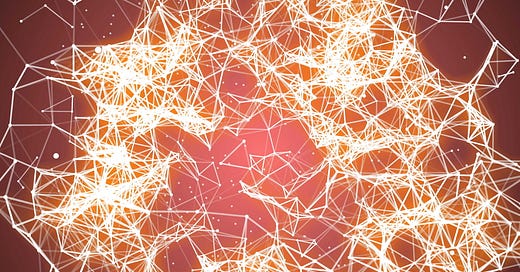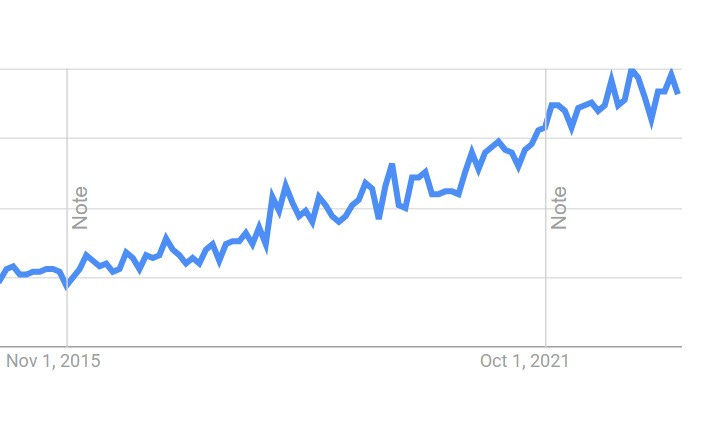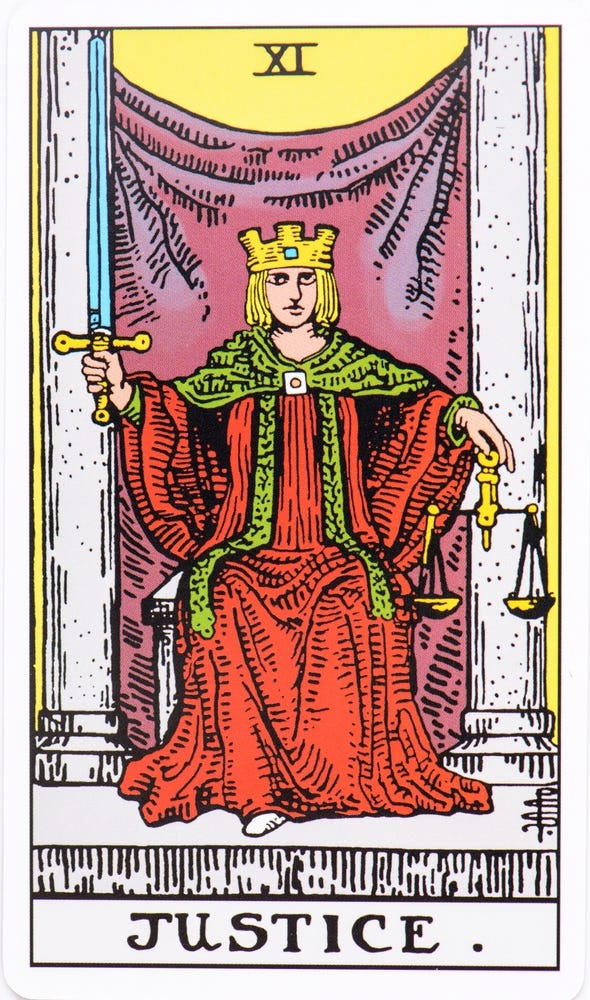“The understanding of the underlying emotion is, therefore, less time-consuming and more rewarding than dealing with one’s thoughts.” — David R. Hawkins.
Resonant World has more than 940 subscribers in countries from the United States and Australia, to the UK, Germany and Colombia Of these, 24 are paying supporters — to whom I’m very grateful. This newsletter serves the global movement working to heal individual, inter-generational and collective trauma — and reader support helps reach more people. Thank you!
Resonant World #63
Last year, at Medicine Festival, Louis Weinstock and Sam Moyo led a workshop called “What the Bleep is Healing Anyway?”
I was on childcare duty during their session, which I mostly spent dragging our then five-year-old daughter around in her wagon (by far her preferred means of perambulation through mud, and never without solar powered fairy lights).
But their question stayed with me.
As awareness of the impact of individual, inter-generational and collective trauma has grown, so too has interest in what can be done about it — as the below graph of searches for “healing trauma” suggests. (Resonant World#44).
But what exactly does “healing” mean?
At one level, it’s fairly obvious: Healing is the removal of symptoms. Whatever had been bothering me doesn’t bother me anymore, either because it’s gone away, or I’ve come to terms with it, and it no longer seems like a problem.
But I suspect the reason that Louis’ and Sam’s workshop was so lively and well-attended (as I later heard) is that there’s much more behind the question than that.
Entire books have and could be written to unpack the concept further, so none of what I’m offering here is meant to be definitive.
Rather, I wanted to share some partial reflections based on my recent experiences of training in the principles of trauma healing with Thomas Hübl and his team, and much prior research and engagement with a wide range of trauma integration modalities.
I offer the following in the hope this may resonate with others, generate further discussion, and yield more precise insights.
Shifting Stuck Energy
We’re all healing all the time. The fantastically complex orchestra of our mind-body system is constantly modulating experience, seeking to remain whole, balanced, and — to include the mystical dimension — connected to something greater than ourselves, whether we call that our soul, Higher Self, Divine intelligence, or simply “the Light.”
But sometimes things get stuck. Something happens that is too much, too overwhelming to accept. Our sense of safety is shattered; and it’s no longer possible to believe in a basically benevolent world. We split off this aspect of our experience and push it down into the unconscious, where it remains trapped in our mind-body system — occupying a mysterious, liminal zone that straddles both our non-material psyche, and the very fabric of our blood and bones.
And it’s not just what happens in our own direct experience that can cause this split. Let’s assume that we can also inherit “packages” of trauma handed down by our ancestors. These packages contain the emotional residue of the experiences they couldn’t digest, and the tears they couldn’t cry. These packages sit deep inside us, creating their own webwork of fractures in our energy field, until we establish the right conditions to integrate them.
In our search to overcome our painful symptoms, and the suffering-inducing patterns we observe at work in our lives, we may accept these premises at an intellectual level. (I’ll confess — even though I began to seriously study trauma more than a decade ago, it’s only relatively recently that the inter-generational, or ancestral, component has become much more real for me). (Resonant World #26).
That’s when we start to seek out therapists, practices or communities to attempt to shift this stuck energy, and harvest the wisdom that lies trapped in the lost splinters of our psyche.
But what does this actually feel like?
How do we know — beyond doubt — that something has shifted in us, that the “work is working,” so to speak? That we’re not simply indulging in wishful thinking — only to fall back into the same old patterns as soon as the old triggers arise? (If we have really healed, the “triggers” are no longer triggers, of course).
In my own journey, I’ve been fortunate to have had a number of what I might call “threshold experiences” where subsequent events have demonstrated that something truly has changed. Among the most significant occurred during a 10-day silent Vipassana retreat in 2011, which in significant ways set me on the path that has led to my current commitment to collective trauma work. (I wrote about that experience here).
There have been many other “threshold experiences” since then, catalysed by a range of practices and approaches — from the Comprehensive Resource Model of therapy developed by my friend Lisa Schwarz, to sweat lodge ceremonies, breathwork, Eye Movement Desensitisation and Reprocessing, psychedelics and plenty else.
So here, in no particular order, are some of the qualities I’ve noticed when something real is happening in my system:
Tears
For me, tears are the signature sign that stuck energy has started moving. These can emerge gently, or suddenly — in wracking sobs. Before I began this work, crying was just “crying.” I have since become far more sensitive to the many registers of tears; in an analagous way, perhaps, to the many ways we in the British Isles have developed to talk about “rain.” I can now sense the onset of a very particular kind of tears that seem to well up directly through an energetic pathway from my heart, and leave a “washed-clean” feeling in their wake. These tears are a good sign that something old and stuck is moving back to where it should be, before the fracture took place. Bring them on!
Insight
The deepest processes I’ve experienced have often been accompanied by powerful physical sensations: tears, shaking (or, on more than one occasion, uncontrollable laughter). (Resonant World #21). There may not be an elaborate “story” attached; I don’t know what — exactly — is leaving my system, only that something is losing its hold on me. But at some point, some kind of insight will click into place. It may come immediately, such as my newfound realisation that “I have for my whole life struggled to deeply receive the blessings Life has given me”. Or it may emerge from unexpected sources, as the story self-assembles over time. For example, following a powerful recent experience of healing, I have since learned new facts about the trauma experienced by my grand-parents that casts my own process in a clearer light.
Joy
When a piece of split-off energy is re-integrating, I feel joy — the kind one might feel after returning home to find your loved ones waiting, and everything intact, after a very long trip (a trip from which at times you were sure you wouldn’t return). The joy then mellows into a feeling of benevolence that makes me a lot more fun to be around than when I’m stuck in recursive trauma loops.
Thought Loops Fade
Over the course of my life, and in common I suspect with most people, my experience of trauma has often played out primarily in my head — through repetitive patterns of negative thinking that cause me (and others) to suffer. In my experience, trying to tackle these thoughts directly is often futile (which is why talk therapies have their limits). It’s important to recognise that repetitive, negative thoughts are symptoms of split-off energy. Once the energy is re-integrated, the thoughts lose their charge. Situations that once seemed like trigger minefields suddenly seem safe — even fun.
This aligns with the basic premise elaborated by David R. Hawkins in his book Letting Go: The Pathway of Surrender, which I’ve been dipping into lately:
“The thoughts associated with one feeling may literally run into the thousands. The understanding of the underlying emotion is, therefore, less time-consuming and more rewarding than dealing with one’s thoughts.” Hawkins writes. “If the feeling has been totally surrendered and let go, usually all thoughts associated with it will have disappeared entirely and been replaced by a concluding thought which handles that matter quickly.”
Cleansing of Perception
It’s not that my eyesight is necessarily sharper, but I feel I can perceive the world and other people with greater clarity. Maybe an analogy for this could be: You’ve lived your whole life looking through a pair of glasses with cracks in them. The cracks are “normal” pre-healing. Each re-integration of split-off energy removes a few more of those cracks.
Eros Returns
I feel subtle currents of sexual energy coming alive in me. Yum.
Rebirth
A realisation that this moment holds infinite possibilities for fresh starts. This can be associated with a feeling of “my life fits me” — that the “good” and the “bad” are actually all part of a coherent, unique story, so any impulse to compare myself with others, or rail against circumstances, evaporates. (A big one for me).
Life IS a Dance
It so happened that I read David McIlroy’s immensely valuable summary of the philosopher and neuroscientist Iain McGilchrist’s monumental work The Matter with Things during my latest retreat with Thomas Hübl and his colleagues. Writing for Perspectiva, McIlroy points out that McGilchrist lands at the conclusion that we live in a participatory universe, and life is more accurately viewed as a dance than an equation.1 This feels intuitively true to me, no more so than in the moments when split energy is returning to its rightful seat.
“Life, in its essence, is a making new: a wholly superfluous, super-abundant, self-overflowing — an exuberant, self-delighting process of differentiation into ever more astonishing forms, an unending dance, in which we are lucky enough to find ourselves caught up,” McGhilcrist writes in The Matter With Things.
McIlory adds:
“We are to go with the flow, to connect with our partners, to follow the harmonies.”
When the healing is real, that feels like the obvious — indeed only — way to live.
It Goes in A Spiral
In my experience, healing is not a one-and-done process. What appears to be the same old pattern or symptom may seem to recur — even after a deep moment of genuine integration with all the bells and whistles I’m describing here. I believe that what’s often happening in such cases is that the symptom is continuing to resolve — only in a spiral pattern. If we observe a spiral from above, it looks like a static circle — so even when it’s moving, we could assume nothing is changing. In reality, when the spiral turns, it is in fact moving through space and time into a new position — it only appears to be stationary when viewed from a certain angle. The stuckness is therefore an optical illusion; a matter of perspective. In the same way, it can feel like we are going back to square one when we an old pattern attempts to reassert itself. In fact, this echo may be precisely what we need to make another, necessary turn through the spiral to transcend the trauma more completely. Keep going!
Ancestors Rally Round
This is a huge topic, which I’m only starting to explore. Suffice to say, I have now directly experienced the ancestral dimension of healing, and can appreciate how it can hold keys to opening our “karmic locks.”
Receiving Grace
Usually only visible in retrospect, we may realise after an authentic integration experience that grace has been active in our lives, guiding us all along.
Becoming More Real
I deeply realise: I wasn’t who I thought I was. This new awareness can be both shocking and deeply liberating. I’m now free to inhabit my authentic self more fully, and express more of who I actually am.
Vertical Connection
I realise I have infinite access to Light.
I would add that these signs — my first steps towards developing a taxonomy of authentic integration — may help to illustrate why healing is not about returning to a pre-trauma, status quo ante. Genuine healing always involves evolving into a higher state of awareness. Life wants us to heal, and it wants consciousness to expand. It’s our job to be alert for the signs that we’re on the right path, and to be a guide for others, where we can.
Work With Me: Soul-Witnessing via the Tarot
All of the above can occur during a good Tarot reading.
I love working with the Thoth Deck — among the most compelling, and indeed convenient — interfaces I’ve discovered for dialling into our personal and collective unconscious with healing intent.
If you enjoy Resonant World, then you may find a Tarot reading with me supportive. I work with the cards to connect you to the part of yourself that knows the answers you seek, and can communicate with amazing precision via the 1,200 symbols in the Thoth Deck. It’s amazing to see what the beautiful, multi-layered imagery can unearth from just below the surface — and feel the clarity and energy that a reading can unlock.
I charge £70 / $90 for an online session that typically lasts 90 minutes, including a guided meditation to establish a coherent field linking us with the cards. (I am a member of the Tarot Association of the British Isles and abide by its code of ethics). Reading the Tarot is one of my absolute favourite things to do, and I love how people light up with the insights and realisations that a session can evoke
.A labour of love, Resonant World is written in the gaps between work I get paid to do, notably editing investigations at nonprofit climate news service DeSmog. It’s a huge boost when people become paid subscribers, and support of any amount affirms that my mission to support the global community of practitioners engaged in supporting people to integrate individual, inter-generational and collective trauma has value. Thank you!
I think it would be a fascinating and potentially very valuable exercise to explore how well McGhilchrist’s philosophical framework might support and clarify what I’ve been learning about the psychological and mystical principles of healing from Thomas Hübl and friends.










Interesting perspectives, and a great summary, thank you 💕🙏 In addition to some resonance here with my own trauma work, we have experienced a range of physical reactions (not necessarily recurrence of symptoms) and 'synchronicities' too in response to shifting layers of trauma (both personal and inter-generational). I very much appreciate your work. We need more of this for our collective healing of human trauma❣️
Excellently put, you’ve distilled with poetic simplicity some of the key phenomenology of healing.